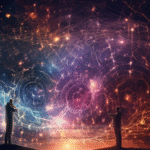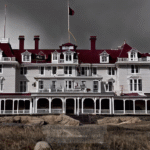What Causes the Tunguska Event: A Century-Old Mystery Still Unsolved?
What Causes the Tunguska Event: A Century-Old Mystery Still Unsolved?
The Tunguska Event, which occurred on June 30, 1908, in Siberia, has baffled scientists and historians for over a century. This massive explosion flattened approximately 2,000 square kilometers of forest and is estimated to have released energy equivalent to 10-15 megatons of TNT. Despite numerous investigations, the exact cause of the explosion remains a mystery, raising questions about our understanding of cosmic events and their impacts on Earth. This blog post delves into the details of the Tunguska Event, exploring historical accounts, scientific theories, and the implications of this enigma.
Historical Context of the Tunguska Event
The Tunguska Event is one of the most significant unexplained phenomena in modern history. In the early morning hours of June 30, 1908, a series of explosions rocked the remote Tunguska region of Siberia. The force of the blast was so immense that it knocked over an estimated 80 million trees and caused seismic waves detectable hundreds of kilometers away. Eyewitness accounts describe a fireball in the sky and a shockwave that felt like a massive earthquake. The remote location and lack of communication infrastructure at the time meant that it took years for scientists to investigate the incident fully.
Initially, the Russian government sent an expedition in 1927, led by the Soviet scientist Leonid Kulik, to study the event’s aftermath. Kulik’s team found no impact crater, leading them to theorize that the explosion was caused by a comet or asteroid entering the Earth’s atmosphere and disintegrating. Over the decades, various theories have emerged, ranging from natural phenomena to speculative extraterrestrial involvement.
Core Concepts: What Happened at Tunguska?
At its core, the Tunguska Event illustrates the potential threat posed by near-Earth objects (NEOs). The prevailing theory suggests that a small asteroid or comet, measuring 50 to 60 meters in diameter, entered the atmosphere at a speed of around 27,000 kilometers per hour. Upon entering the atmosphere, the object would have experienced intense friction and pressure, leading to its destruction at an altitude of 5 to 10 kilometers above the ground. This explosion released energy comparable to that of a nuclear bomb, resulting in the widespread devastation observed in the area.
The explosion generated a shockwave that flattened trees and created a series of fires in the surrounding forest. The lack of an impact crater remains one of the most compelling aspects of this mystery, as it indicates that the object did not collide with the Earth in a traditional manner.
Scientific Theories Explaining the Tunguska Event
Several theories have been proposed to explain the Tunguska Event, each with its merits and challenges. Below are some of the most prominent theories:
- Asteroid Impact: The most widely accepted theory is that a small asteroid entered the atmosphere and exploded before reaching the ground.
- Comet Disintegration: Some scientists suggest that a comet, composed largely of ice and dust, disintegrated in the atmosphere, causing the explosion.
- Nuclear Explosion: A fringe theory posits that the explosion was caused by a secret nuclear test by the Soviet Union, although no evidence supports this claim.
- Natural Gas Explosion: Some researchers have speculated that the event could have been triggered by a natural gas explosion, although this theory lacks substantial evidence.
Practical Implications of the Tunguska Event
The implications of the Tunguska Event extend beyond mere curiosity; they highlight the potential risks posed by NEOs. Understanding such events is critical for planetary defense, as the Earth is constantly bombarded by smaller meteoroids. The Tunguska Event serves as a reminder of the catastrophic consequences that can arise from these cosmic encounters. Governments and space agencies worldwide are increasingly investing in research and technology to detect and track NEOs, as well as develop mitigation strategies for potential threats.
Key Point: The Tunguska Event underscores the need for global cooperation in monitoring and addressing potential asteroid threats to Earth.
Alternative Perspectives: Theories Beyond the Conventional
While the asteroid and comet theories dominate the discussion, alternative perspectives have emerged over the years. Some researchers have proposed exotic explanations, such as the release of natural gas from beneath the Earth’s surface or even scientific experiments gone awry. These alternative theories often capture the imagination but lack robust scientific backing. For instance, the natural gas explosion theory fails to explain the extensive damage over such a wide area without a visible source.
Moreover, the notion of an extraterrestrial or UFO involvement, while popular in conspiracy circles, remains firmly in the realm of speculation without credible evidence. The scientific community largely dismisses such claims as they do not adhere to established scientific principles.
Common Misconceptions About the Tunguska Event
Despite the extensive research surrounding the Tunguska Event, several misconceptions persist. One common belief is that the event was a direct impact from an asteroid, which is misleading. The consensus among scientists is that no physical object hit the ground, as evidenced by the absence of a crater.
Another misconception is that the explosion was a nuclear explosion. While the energy released was comparable to a nuclear bomb, the evidence does not support the involvement of human technology.
Furthermore, some people believe that the event was a sign of impending doom or a supernatural occurrence. Scientific investigations have provided a more rational explanation, steering discussions away from sensationalism.
Best Practices for Investigating Scientific Anomalies
Investigating scientific anomalies like the Tunguska Event necessitates a rigorous and methodical approach. Here are some best practices researchers should follow:
- Gathering Comprehensive Data: Collecting eyewitness accounts, geological data, and historical records is crucial for understanding the context of the event.
- Interdisciplinary Collaboration: Collaborating with experts in various fields, including geology, astronomy, and environmental science, can yield more comprehensive insights.
- Utilizing Modern Technology: Employing advanced technology such as satellite imagery and remote sensing can aid in analyzing large areas and uncovering hidden details.
- Peer Review and Open Dialogue: Maintaining transparency in research and encouraging peer review fosters credibility and helps challenge and refine hypotheses.
Future Developments and Ongoing Research
As technology advances, ongoing research into the Tunguska Event continues to yield new insights. Recent studies have employed satellite imagery and computer simulations to model the explosion’s effects. These simulations aim to recreate the event and test various hypotheses, including the size and composition of the object that caused the explosion.
In addition, scientists are actively working on developing better detection systems for NEOs. Space agencies like NASA and ESA are investing in missions to identify potential threats and devise strategies for planetary defense. The ongoing discourse around Tunguska serves as a catalyst for broader initiatives aimed at protecting Earth from cosmic threats.
Conclusion: The Tunguska Event as a Cosmic Enigma
The Tunguska Event remains one of the most captivating mysteries in the realm of scientific anomalies. The lack of a definitive cause continues to inspire research and speculation alike. This event serves as a reminder of the complex interactions between our planet and the cosmos, urging us to remain vigilant in our study of near-Earth objects. As scientists continue to investigate the Tunguska Event and its implications, we are reminded of the importance of collaboration and innovation in understanding our universe.
In the end, while the Tunguska Event may remain shrouded in mystery, it also serves as a testament to humanity’s quest for knowledge and understanding in the face of the unknown.
Other Articles
Recent Posts
- What Happened to Flight MH370? The Conspiracy Theories That Still Haunt Us
- What Secrets Lurk Within the Walls of the Infamous Trans-Allegheny Lunatic Asylum?
- What Evidence Supports the Existence of Bigfoot in the Pacific Northwest?
- What Happened to the Indus Valley Civilization? Unraveling the Mysteries of Ancient Urban Life
- Can Telepathy Be Scientifically Proven Through Laboratory Evidence?







